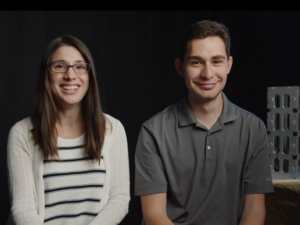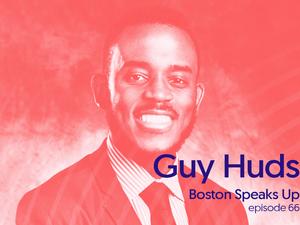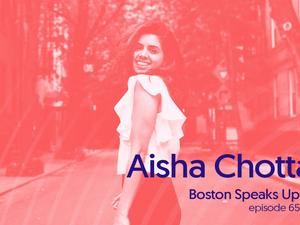There’s a very clear purpose for “explainer” journalism. If a reporter publishes an article about just the latest development in an ongoing high-profile story — say, a trial or a protest — readers are left with no context around what led up this event. Sure, you can include a few hyperlinks to related pieces, but what if you could make those references more obvious by adding rich media, building out a story in a more visual and digestible way to bring readers quickly up to speed?
That vision is the inspiration for FOLD, a new MIT Media Lab project that serves as a new entrant into the realm of Medium alternatives. FOLD, in fact, builds on some of Medium's best aspects but seeks to add more support for multimedia content to produce an ultra-engaging reader experience.
While in Ethan Zuckerman’s “Future of News and Participatory Media” class, students and visiting journalists were tasked with developing new tactics for reporting and storytelling, and one of the weekly assignments focused on explainer journalism. Zuckerman posed an idea for explainers with a more accordion-like structure — in other words, stories that can shrink or expand depending on a reader’s level of need for background information. Kevin Hu and Alexis Hope created an early prototype of what a FOLD story would look like — one that could compress into a list of seven sentences, inflate to a six-paragraph essay or balloon even further into a long-form multimedia piece with maps, videos and images alongside the text.
The concept garnered a positive response from classmates, and Hope opted to take on developing FOLD as her Masters thesis, bringing on developer Joe Goldbeck, with Hu continuing to contribute. The team is currently working out of the MIT Media Lab, where Kevin and Alexis are still students, and the majority of their work is done at a big communal table in the Center for Civic Media. Ethan Zuckerman, César Hidalgo, Matt Carroll, and Sputniko!, all at MIT, are acting as advisors.
How it works
With FOLD, anyone can write a story, and about any topic. By adding “context cards” to their stories directly within the platform, authors are able to integrate everything from videos, maps, and tweets, to music and interactive visualizations. Readers can favorite the stories they like, or share them on social media. Pretty soon, people will also be able to share cards from one story to another, linking them together. According to the team, new users are arriving every day.
Professor Zuckerman put it perfectly on his blog: “Stories on FOLD have a trunk and leaves. The trunk is text, with a novel form of hyperlinks – instead of linking out, they link to cards that appear to the right of the trunk and show images, videos, maps, data visualizations. They can also contain other text or links to the web. This has the effect of encouraging massive linking within stories – rather than a link potentially leading someone away from your webpage, it builds a stronger and richer story on the site.”
Fold officially launched April 22, and in the month leading up to that, the site conducted a beta with a small group of journalists and online writers to ensure the authoring experience was “fun, simple, and flexible.”
“While FOLD’s inspiration came from a journalistic context, it has evolved to become a tool that is useful for other kinds of storytelling, not just news,” the cofounders said in an email interview.
The content on FOLD ranges vastly, from cupcake recipes and news haikus to heavier reporting and hologram explainers.
The content on FOLD ranges vastly, from cupcake recipes and news haikus to heavier reporting and hologram explainers.
“We approached FOLD’s release with an experimental mindset: we were, and still are, curious about what kinds of stories people will write,” said the team in their email. “We’ve been pleasantly surprised to see huge variation in what people choose to write about, and how they are using FOLD.”
Medium's influence
While the team says FOLD has been inspired by Medium’s “attention to detail, simplicity, beauty, and emphasis on ease-of-use,” it has a radically different layout. What truly sets the site apart, though, is its integrated support for many different media types — and the way in which authors make use of them. For example, Zuckerman annotated his narrative about choosing what metal music to listen to while grading Masters’ theses with animated gifs and actual music, while Sara Watson surfaced the technological context behind her speculative fiction story exploring a data-driven future, and Bob Young incorporated YouTube clips, news snippets and tweets into his book review of “Weed the People.”
Every day, the FOLD team reads through all of the new stories that come in, highlighting those that are especially well-written, focus on an interesting topic, or use the platform in an unexpected way on the “curated page.”
So what’s next? A mobile app, of course, which the team says they’ve completed the initial steps for building. Currently, FOLD stories are public by default once published, but they’re working on exploring ways to enable private and small group publishing as well.
Images via FOLD.








